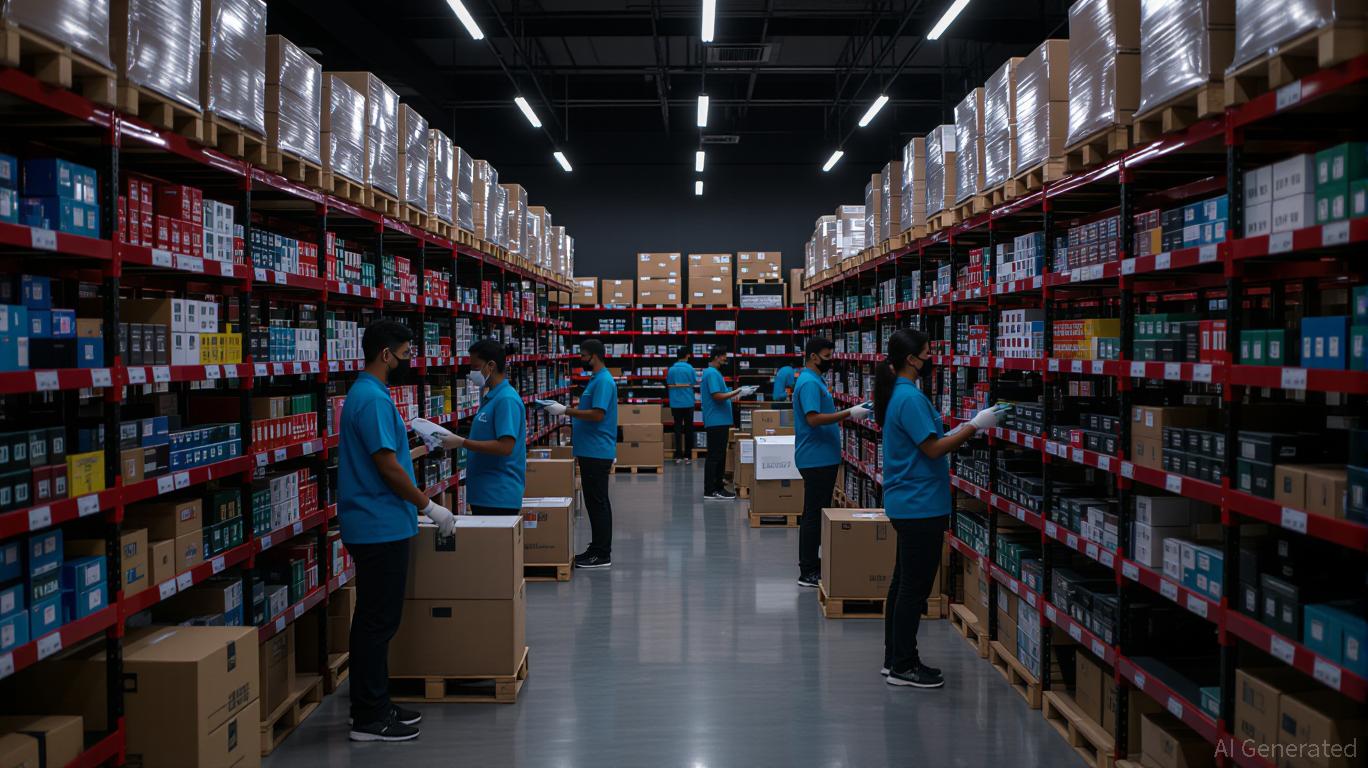Assessing the Tipping Point in Quick Commerce: Is Blinkit on the Path to Profitability and Sustainable Value Creation?

The quick-commerce sector in India has been a high-stakes battleground for years, with players like Blinkit, Zepto, and Swiggy Instamart racing to dominate a market that promises explosive growth but demands razor-thin margins. Blinkit, the quick-commerce arm of Eternal (Zomato), has been a standout in this race—not for its profitability, but for its relentless growth. In the 2024-2025 fiscal year, the company's Gross Order Value (GOV) surged 134% year-over-year to ₹9,421 crore, with revenue hitting ₹1,709 crore in Q4 alone. These numbers are impressive, but they mask a critical question: Is Blinkit's strategy sustainable, and can it truly flip the switch from growth-at-all-costs to profitability?
The Strategic Shift: From Marketplace to Merchant
Blinkit's recent pivot from a third-party marketplace model to an inventory-led model is the most significant development in its journey. By becoming the merchant of record through its in-house entity, Blink Commerce Private Limited (BCPL), the company is taking full control of inventory, pricing, and logistics. This move is not just a structural change—it's a philosophical one.
The old model left Blinkit vulnerable to margin compression, as it relied on third-party sellers to dictate pricing and availability. Now, by owning its inventory, Blinkit can leverage dynamic pricing, curate high-demand SKUs, and expand into higher-margin categories like private labels. This shift is expected to boost its take rate from 18% to 23%, aligning it with Zepto and creating a more direct path to profitability.
The inventory-led model also solves a critical regulatory hurdle. Eternal's restructuring in April 2025 to become an Indian-owned and controlled company (IOCC) allows it to legally own inventory without violating India's FDI rules. This structural flexibility is a game-changer, enabling Blinkit to act as both a platform and a merchant while sidestepping the compliance burdens that plagued its earlier model.
Unit Economics and the Road to EBITDA Breakeven
Despite its aggressive expansion, Blinkit's unit economics remain a work in progress. In Q4 FY25, the company reported an EBITDA loss of ₹178 crore, with adjusted EBITDA margins at -1.9% of GOV. While this is better than Swiggy Instamart's -18% margin, it still signals that the company is far from self-sustaining.
The good news? Blinkit is making measurable strides. Its average order value has risen 17% YoY to ₹627, and delivery costs per order have dropped 14% to ₹55. These improvements, coupled with the inventory-led model, could unlock operating gains of ₹290–635 crore by FY26.
even forecasts EBITDA breakeven by Q4 FY25 if the company maintains its current trajectory.But here's the rub: Blinkit's customer acquisition cost (CAC) of ₹1,240 still exceeds its customer lifetime value (CLV) of ₹890. This means the company is spending more to acquire customers than they're worth—a dangerous imbalance that could erode margins if not corrected. The inventory-led model aims to flip this equation by reducing reliance on subsidies and improving pricing power.
The Bigger Picture: Competition, Cash Burn, and Scalability
Blinkit isn't the only player in this high-stakes game. The quick-commerce sector as a whole is burning an estimated ₹5,000 crore per quarter, with rivals like Zepto and Swiggy Instamart also chasing market share. Blinkit's 45% market share in India is impressive, but it's not immune to the pressure.
The company's recent ₹1,500 crore funding infusion (bringing total investment from Zomato to ₹4,300 crore) underscores its commitment to scaling. However, this capital is being deployed to build 2,000 dark stores by December 2025—a capital-intensive strategy that could strain cash reserves if unit economics don't improve.
The key to long-term success lies in dark store maturation. Early-stage dark stores are expensive, but as they scale, their per-unit costs decline. Blinkit's ability to optimize these stores—through automation, data analytics, and inventory management—will determine whether it can sustain growth without continuous infusions of capital.
Risks and Rewards: A Balanced View
Blinkit's shift to an inventory-led model isn't without risks. Managing perishable goods requires precise forecasting and logistics, and any missteps could lead to spoilage or stockouts. Additionally, as the merchant of record, Blinkit now shoulders direct liability for product defects and regulatory compliance—a stark contrast to the relative safety of its previous marketplace model.
Yet, the rewards are equally compelling. By controlling its inventory, Blinkit can reduce discounting, improve margins, and create a more consistent customer experience. Its parent company's B2B logistics arm, Hyperpure, further strengthens this strategy by providing cold chain capabilities for perishables—a critical differentiator in a sector where freshness is king.
Investment Takeaway: The Tipping Point
For investors, the question isn't whether Blinkit can grow—it's whether it can grow profitably. The company's aggressive expansion and strategic pivot suggest it's on the cusp of a breakthrough. However, the path to profitability is far from guaranteed.
If Blinkit can achieve EBITDA breakeven by late 2025 while maintaining its 45% market share, it could become a standout in an otherwise unprofitable sector. But if unit economics stall or cash burn outpaces growth, the valuation premium (Goldman Sachs estimates $10.5–13 billion) may not justify the risk.
Investment advice? Monitor key metrics closely: EBITDA trends, dark store efficiency, and
between CAC and CLV. If the company continues to narrow these gaps, it could be a compelling long-term play. If not, the market will likely punish overvaluation.The quick-commerce sector is a high-stakes race, but Blinkit's strategic agility and capital firepower give it a strong shot at winning. Whether it can translate growth into sustainable value creation will depend on its ability to execute—something it's shown it can do time and again.
Sign up for free to continue reading
By continuing, I agree to the
Market Data Terms of Service and Privacy Statement

Comments
No comments yet